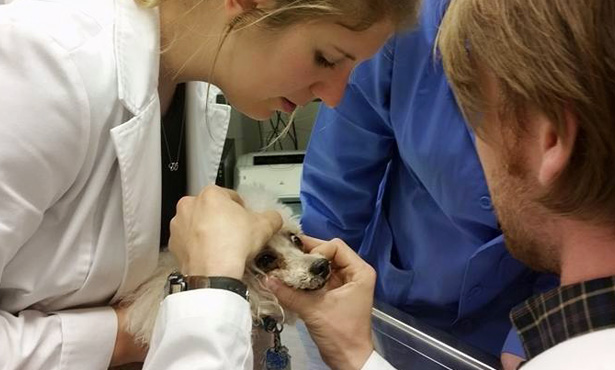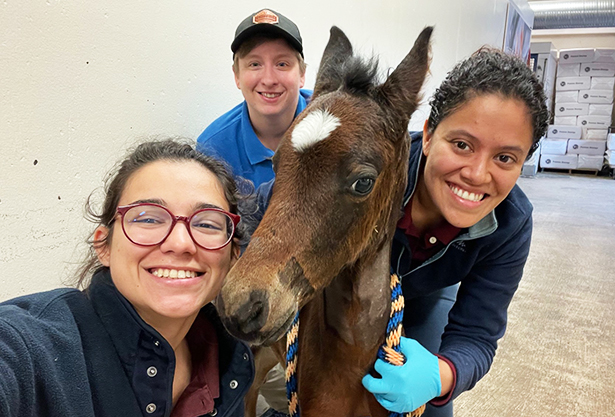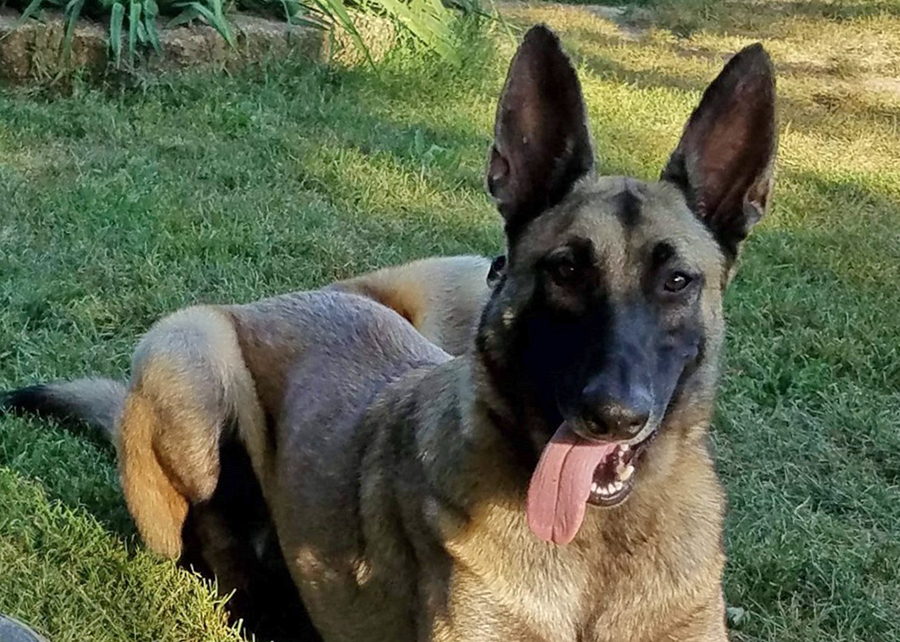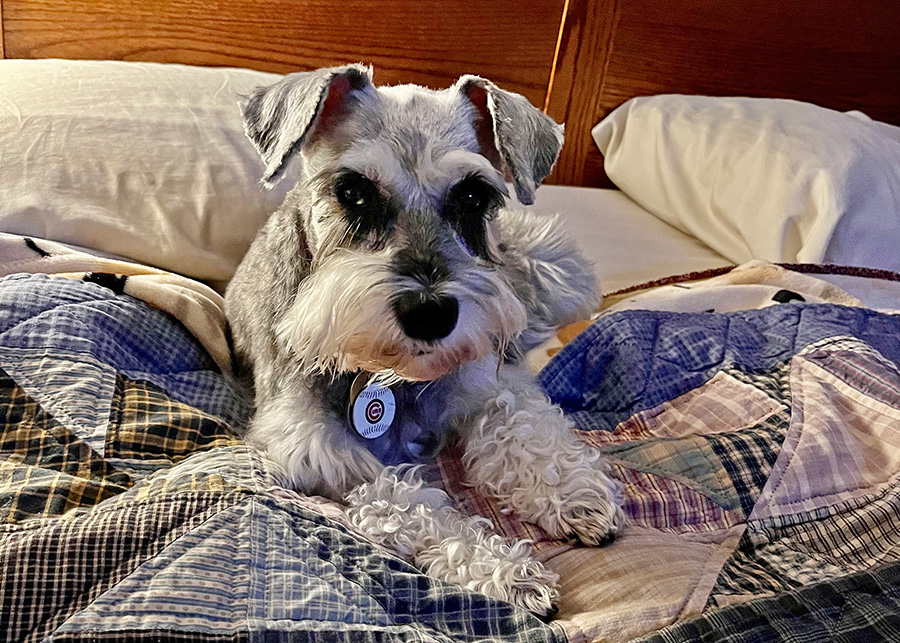For RussT, a toy poodle in Galva, Ill., the eyes have it.
In fact, amazingly, since he was in serious jeopardy of going blind as a puppy, his eyes have had the miracle of sight for more than a decade.
RussT—named for his owner Krisann Smith’s late father, Russell T. Kelly—is believed to be the oldest living dog still retaining its eyesight after undergoing surgery for both juvenile cataracts and glaucoma. His procedures were performed at the University of Illinois Veterinary Teaching Hospital when RussT was barely more than a year old.
He celebrated his eleventh birthday in February 2016.
“He gets along real good,” says Smith, a retired driver for Greater Peoria Mass Transit CityLink. “He’s got great eyesight for being 11 now. There’s nothing growing on his eyes.
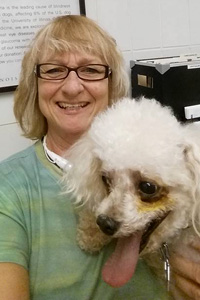 “We take him to the U of I every six months and he’s had wonderful checkups. It gives me great relief to know that, with their knowledge, they think he’s doing great.”
“We take him to the U of I every six months and he’s had wonderful checkups. It gives me great relief to know that, with their knowledge, they think he’s doing great.”
Smith and her late husband, Eddy, first suspected their puppy might have a vision problem when they put up a temporary snow fence on their three acres of recreation property in Galva to keep RussT and their other pets contained. “We noticed that RussT kept running into the fence,” Smith says. “That was the first clue that something was wrong.”
She says veterinarians at Demanes Animal Hospital in Peoria recommended she take him to the ophthalmology specialists at the U of I hospital’s Small Animal Clinic, and gave her a referral. “I thought that was the best thing, that the University of Illinois would know how to treat it,” Smith says. “So I was all for that.”
Dr. Ralph Hamor, former head of the hospital’s ophthalmology clinical service, says, “Cataract surgery itself in dogs is not that uncommon. What was unique about RussT was that he had a couple of procedures done to his eyes that were novel at that time. One was the endolaser procedure for glaucoma, a unit that was in early use at that point. The other was that one of his replacement intraocular lenses was actually sutured into place because of some complications he had, and that was one of the first times I had ever done that procedure.”
Typically, cataract surgery for dogs—and humans—involves removing the eye’s natural lens containing the cataract and replacing it with an artificial, intraocular lens. “They took out the lenses in both eyes,” Smith marvels. “I don’t know if they were too damaged, but they put a shunt in his left eye that he still has today. In his right eye, they replaced his lens with a new lens and stitched it in.”
Today RussT has what Hamor terms “functional vision” and Smith has been diligent in applying prescription eye drops three times a day for 10 years. “And of course, going down to the hospital every six months there’s different students coming through all the time, and it gives them an opportunity to learn from RussT and see what can be done,” says Smith. “It’s great. He’s a miracle.”
—Jim McFarlin

